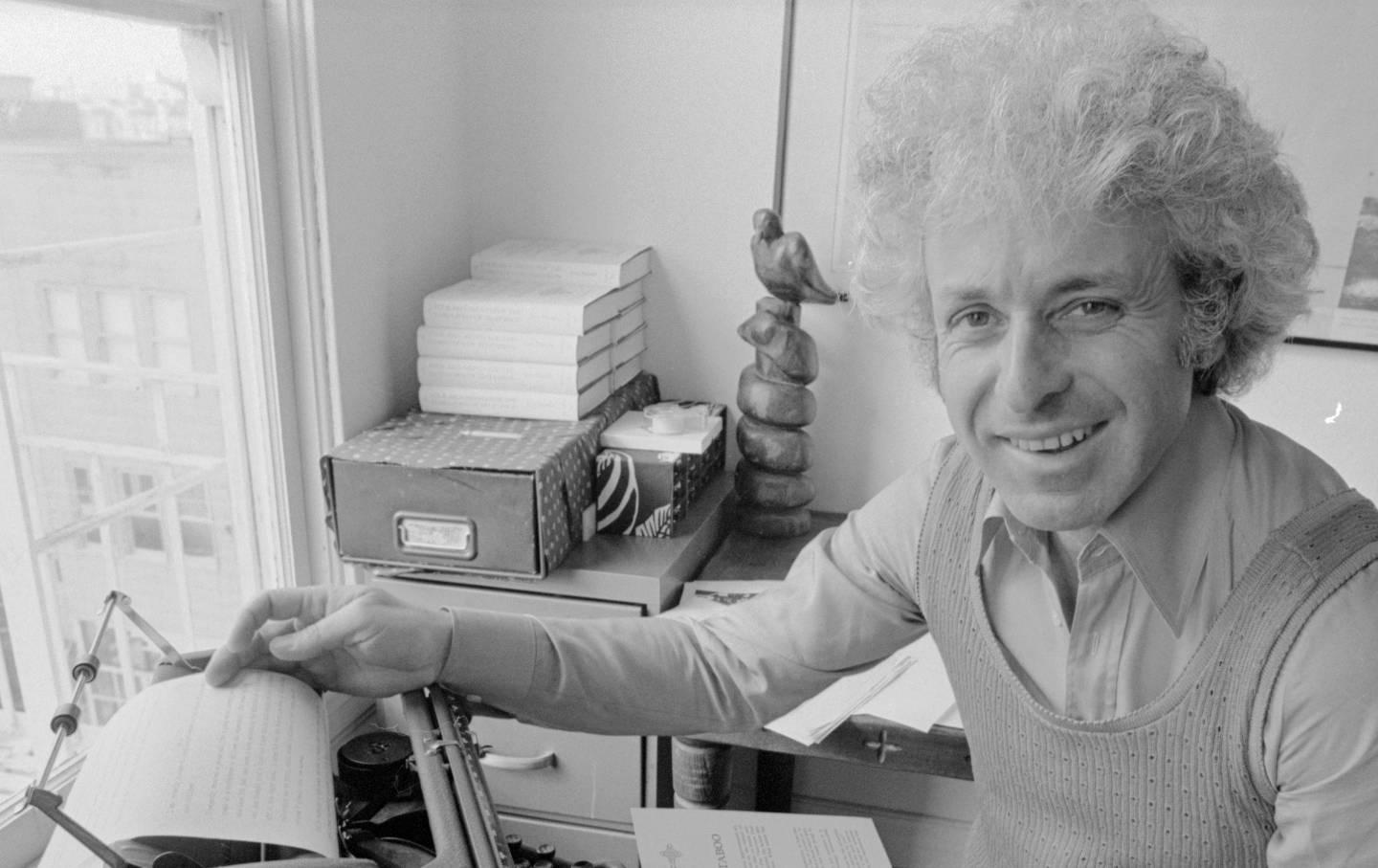
Jerry Mander, author of Four Arguments for the Elimination of Television, at his typewriter.(Roger Ressmeyer / VCG via Getty Images)
Jerry Mander died recently in Hawaii after a long illness, according to his wife, the filmmaker Koohan Paik-Mander.
Jerry was a groundbreaking activist-adman, a key figure in the anti-globalization movement, a trenchant critic of technology and capitalism, and a valued contributor to this magazine.
In 1966, the San Francisco advertising executive Howard Gossage invited Jerry to join his firm. The two of them created an ad that helped stop the US government from building two giant dams that would flood the Grand Canyon. The Bureau of Reclamation had claimed that the public favored the plan because small boats would then be able to float high up in the canyon, allowing visitors to touch its beautiful walls. The headline of Jerry’s full-page ad asked: “Should We Also Flood the Sistine Chapel, so Tourists Can Get Nearer to the Ceiling?”
Jerry’s cheekiness resonated with Nation editor Victor Navasky, who enlisted him as a frequent contributor on Indigenous justice, media reform, militarization, and overweening corporate power.
After Howard Gossage’s death in 1969, Jerry opened his own agency, dedicated to advocacy advertising in the public interest. His clients included Earth Island Institute, Planned Parenthood, Greenpeace, and others. The Wall Street Journal called him “the Ralph Nader of advertising.” It was during this period that Jerry teamed up with Stewart Brand and others to create the iconic Whole Earth Catalog, During the 1970s Jerry became a frequent contributor to The Nation, on a host of issues, including corporate power run amok.
Jerry wrote several books, including Four Arguments for the Elimination of Television (Morrow) and In the Absence of the Sacred (Sierra Club Books). His conviction that “technology will not save us” made him a dissident voice during the meteoric rise of the Bay Area tech industry. His 1996 cover story for The Nation, “The Dark Side of Globalization: What the Media Are Missing,” criticized the new global economic order and its implications.
Jerry and friends called themselves the “International Forum on Globalization,” or IFG. Writing in The Nation, Naomi Klein called the IFG “the brain trust of the [anti-globalization] movement.”
All of the IFG’s warnings have come to pass. US jobs and manufacturing have disappeared (with the exception of the multitrillion-dollar arms industry) as corporations have outsourced to Asia and elsewhere. Environmental, labor, and safety standards have dwindled, even as the world faces unprecedented catastrophes of climate change, economic inequity, pandemics, and the Sixth Extinction. Authoritarianism has emerged in backlash, ratcheted up by new technologies.
Jerry would not have despaired. According to John Cavanagh and Maude Barlow, “Jerry’s charge to us: Don’t give up because you lost the first round. Educate movements and the public to fight back. He challenged us to stage teach-ins that would lead into massive protests on the streets in the cities where the World Bank, IMF, and WTO were gathering and corporate leaders. None of the 40–50 of us who became the core of the International Forum on Globalization thought this would work. But Jerry convinced us to try, and he marshaled the resources to make a dozen of them happen.”
Of Jerry’s time on this planet, the author Stephanie Mills said it best: “The dear Earth could ask no more of anyone. It was a noble life’s work.”
The Editors